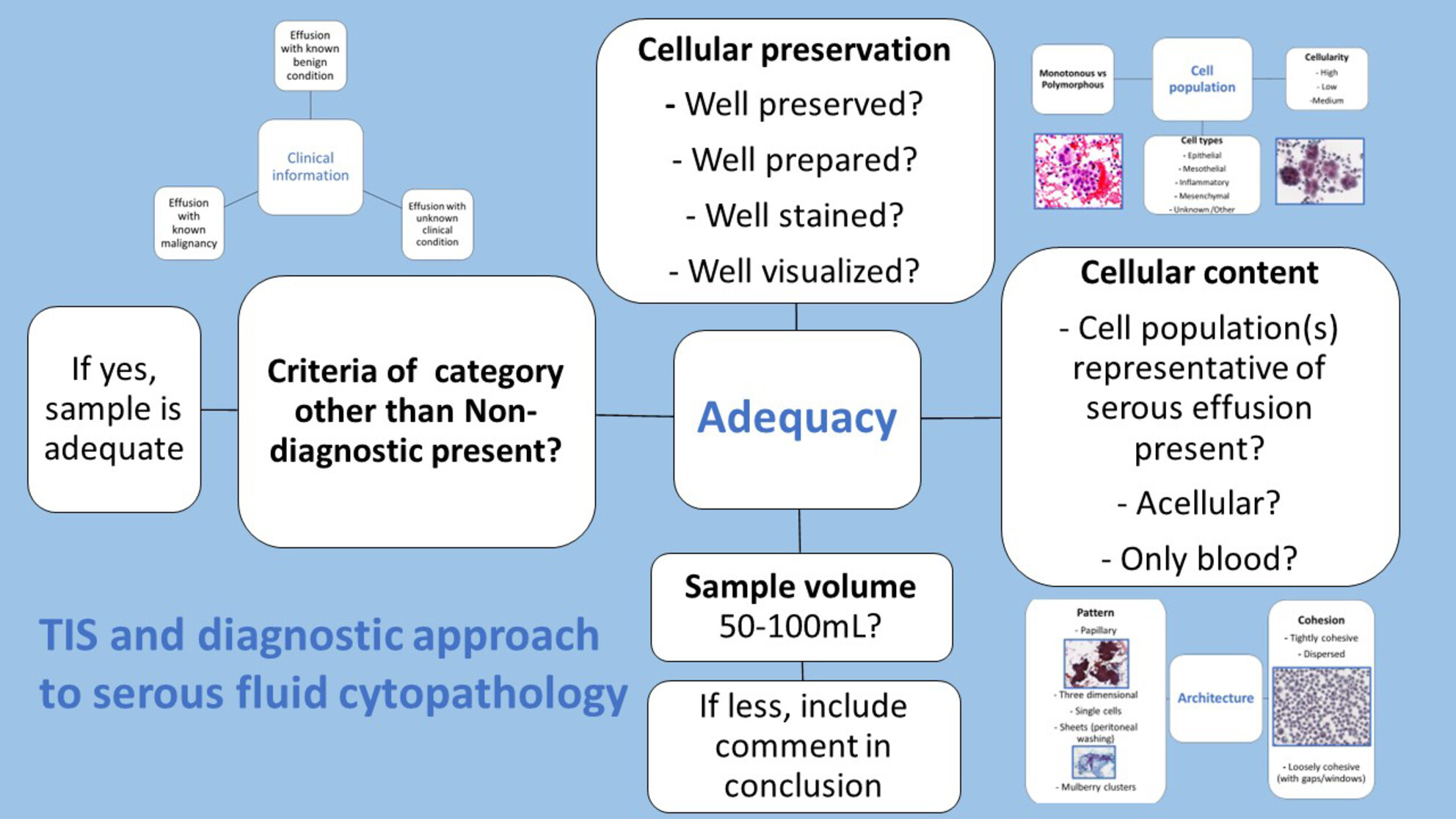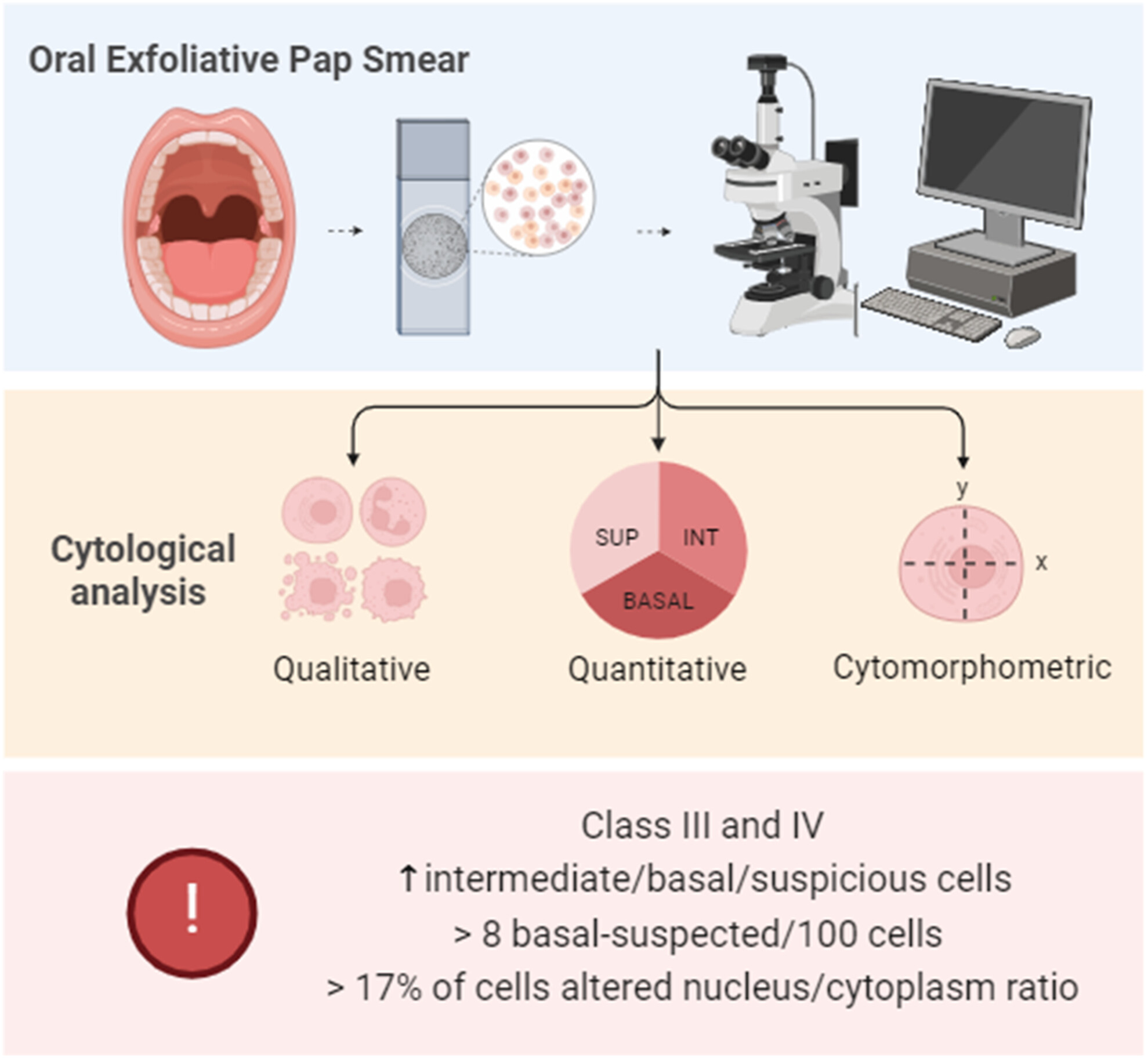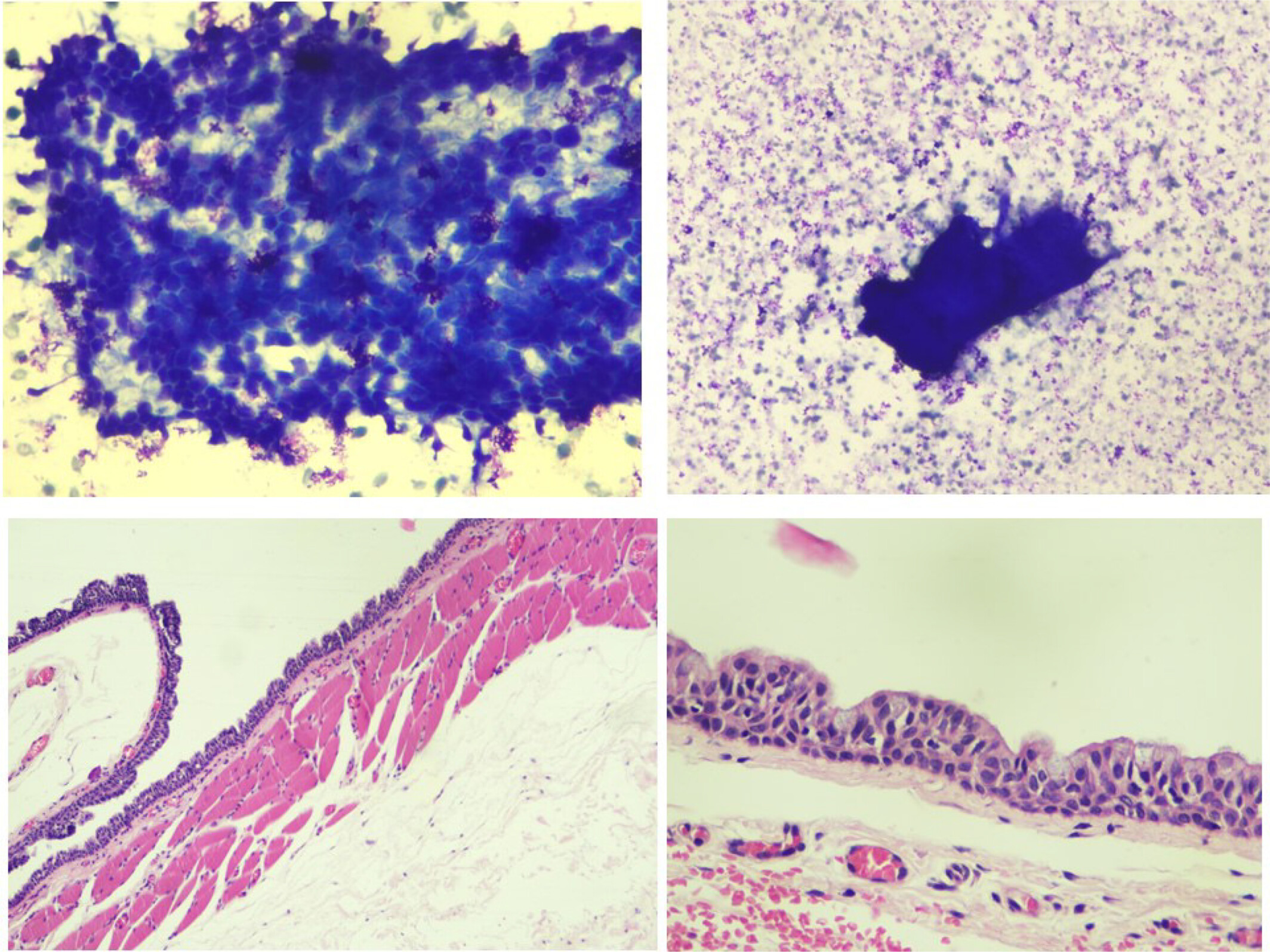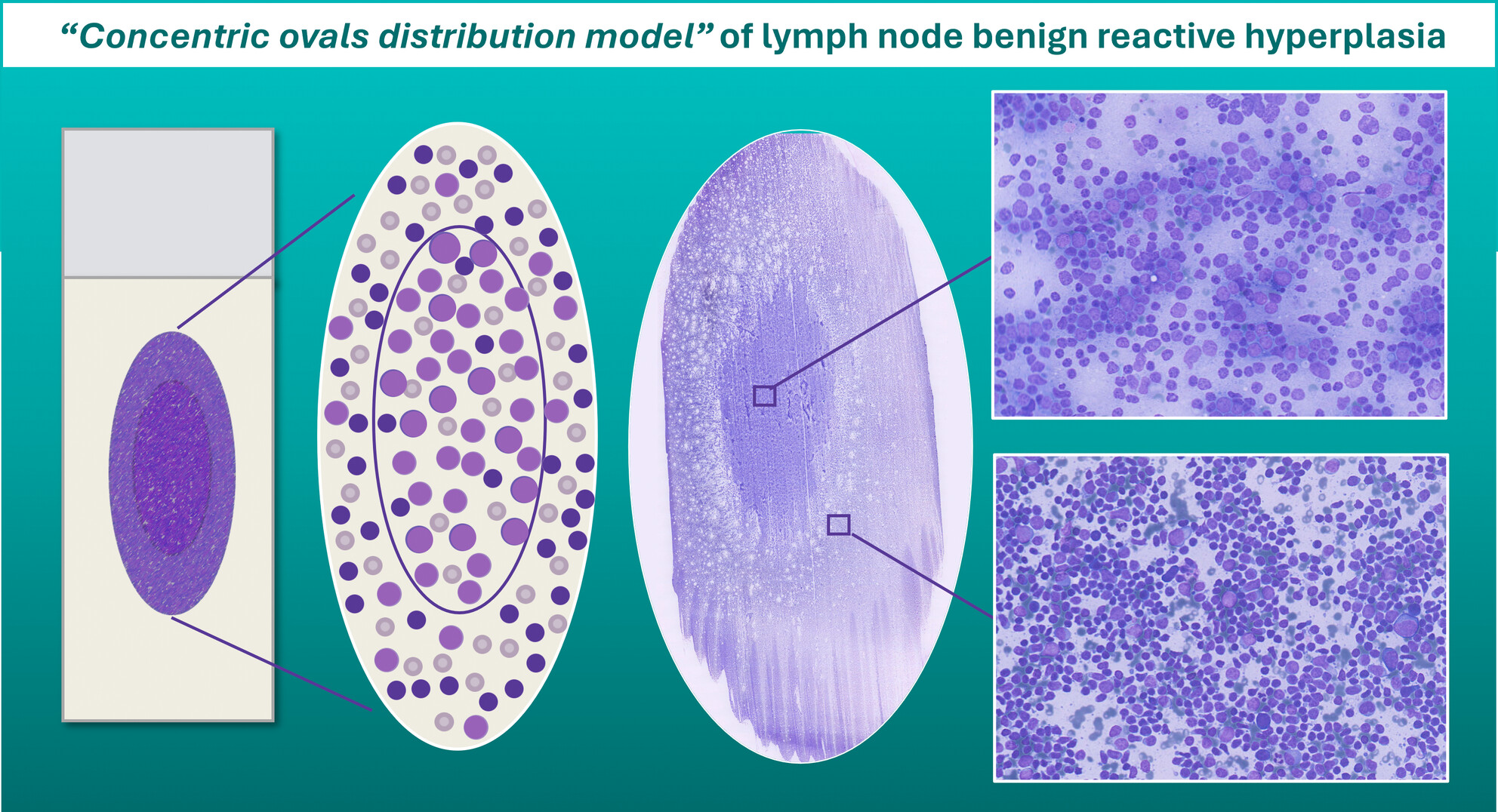Journal list menu
Export Citations
Download PDFs
ISSUE INFORMATION
REVIEW
Rapid on-site evaluation of fine-needle aspiration specimens using cytotechnologist-performed telecytology: Insights and advantages
- Pages: 2-11
- First Published: 19 August 2024

It's proposed here the use of telecytology for all cytology specimens where rapid on-site evaluation (ROSE) is beneficial, through cytopathologists immediate assessment and cytotechnologists' first evaluation. Different types of ROSE, pre-established adequacy categories, and future billing codes are discussed for the benefits of expanding medical centres.
Practical Approach to Reporting Based on the International System for Serous Fluid Cytopathology
- Pages: 12-22
- First Published: 02 October 2024
ORIGINAL ARTICLE
Simple and rapid flow cytometry assay for the detection of malignant epithelial cells in body fluids
- Pages: 23-30
- First Published: 04 June 2024
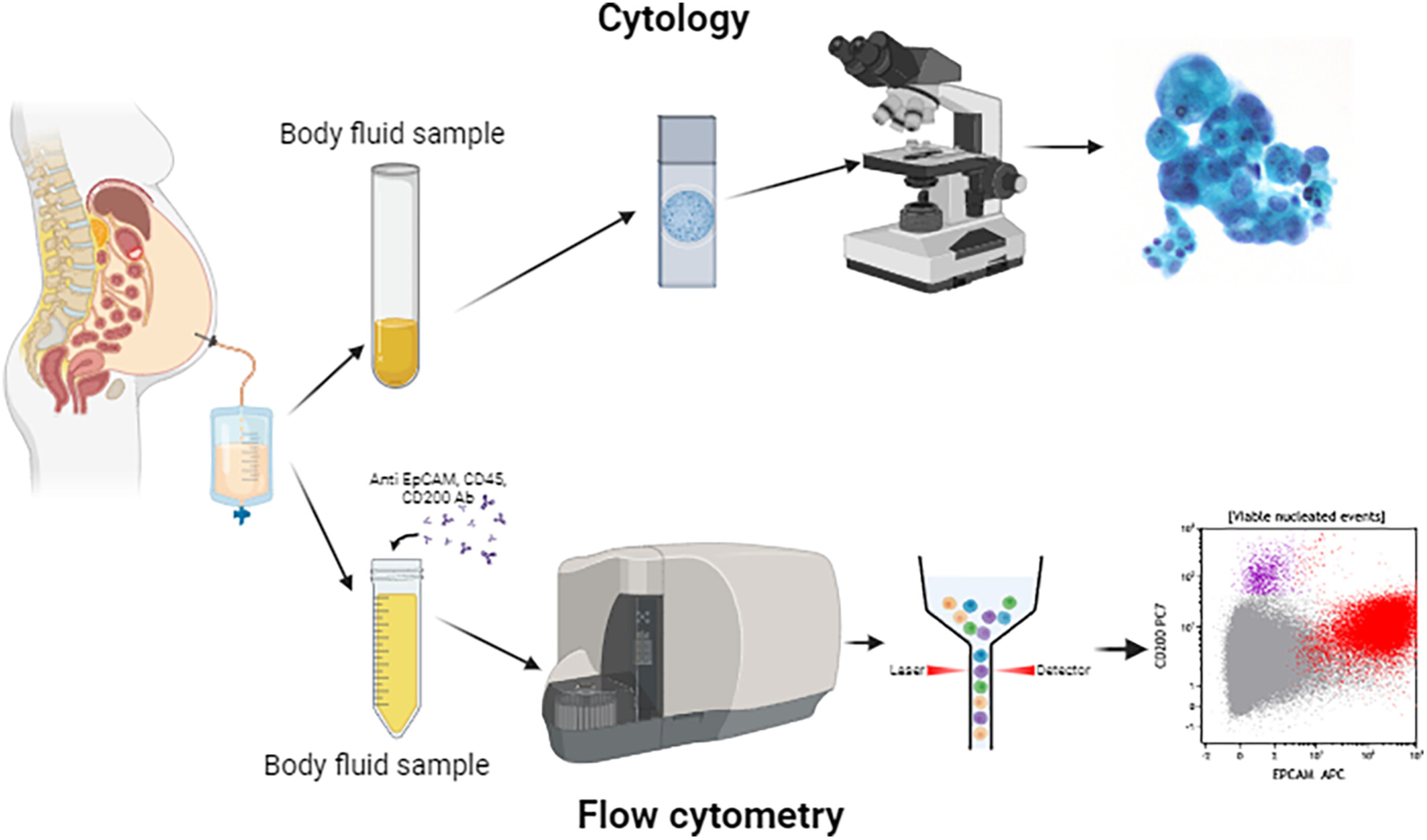
FCM is used as an effective tool for studying non-haematological malignancies. We have studied a simple and rapid flow cytometry (FCM) test for the detection of malignant epithelial cells in body fluids. We developed an antibody panel composed only of surface markers for this FCM assay to enable faster results. We compared the results of cytology/cell block and FCM. FCM would become a valuable tool to complement routine diagnostic cytology and reduces misdiagnosis.
A simple and rapid flow cytometry test has been developed for the detection of malignant epithelial cells in body fluids. This FCM assay is simple, easier and cost-effective, yielding sensitive results with no inter-observer variability. This technique will improve the diagnostic accuracy, serving as a valuable adjunct to cytology and cell block analysis.
Higher sensitivity of pericardial fluid cytology than biopsy in malignant effusions with potential explanation of false-negative cytology: A multi-institutional analysis
- Pages: 31-40
- First Published: 20 September 2024
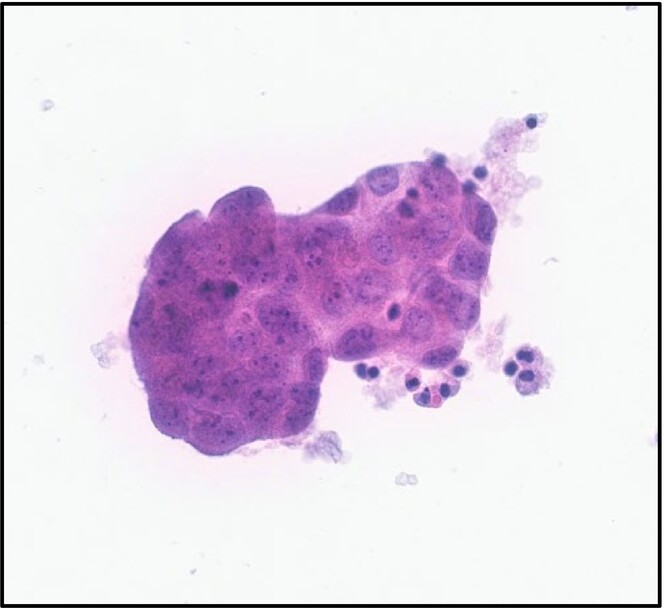
Higher sensitivity of pericardial fluid cytology than biopsy in malignant effusions. Lung adenocarcinoma is the most common type in malignant pericardial effusion.
A multi-institutional study reviewed 309 cases of pericardial fluid cytology and pericardial biopsy, highlighting greater sensitivity of cytology (84.8%) with the most common primaries being lung, breast, gastrointestinal, and haematologic origin. The study also commented on the impact of ancillary testing, volume of pericardial fluid submitted for analysis, and utilization of molecular diagnostics like cfDNA methylation analysis for further enhancement of diagnostic accuracy and improved patient outcomes.
Oral cancer screening using cytopathology: An advanced proposal with the Bethesda classification
- Pages: 41-49
- First Published: 20 August 2024
Malignant melanoma diagnosed by fine-needle aspiration in cases presenting with parotid mass
- Pages: 50-55
- First Published: 04 September 2024
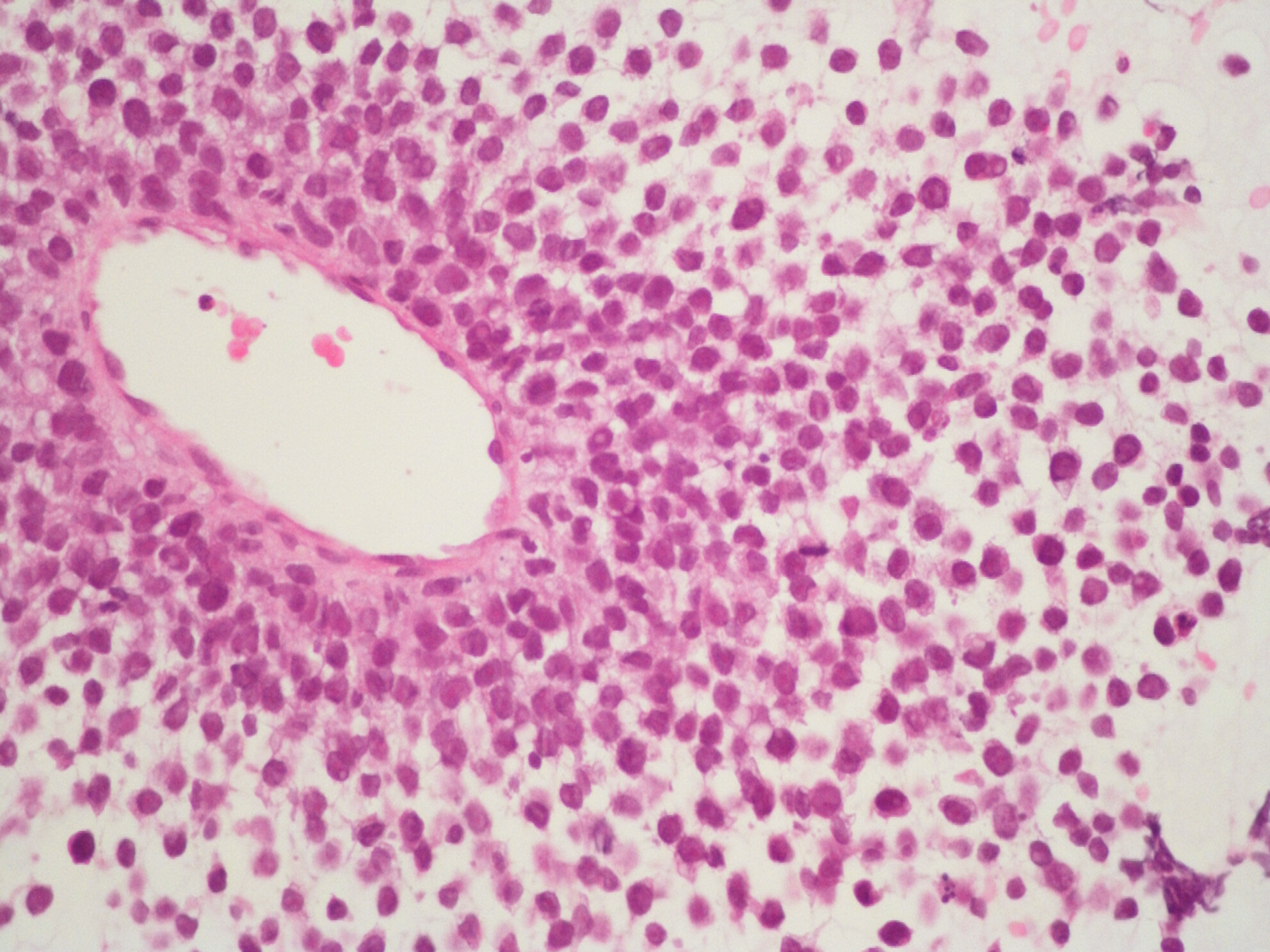
Herein, 4 cases of malignant melanoma, each presenting with a parotid mass and diagnosed by fine-needle aspiration, are presented. Diagnosis can be challenging when melanoma occurs in unusual sites, cytological findings are ambiguous, and there is no prior melanoma history. Accurate diagnosis requires high suspicion and suitable immunohistochemistry.
Striated duct adenoma: The cytological description of a rare entity
- Pages: 56-62
- First Published: 09 September 2024
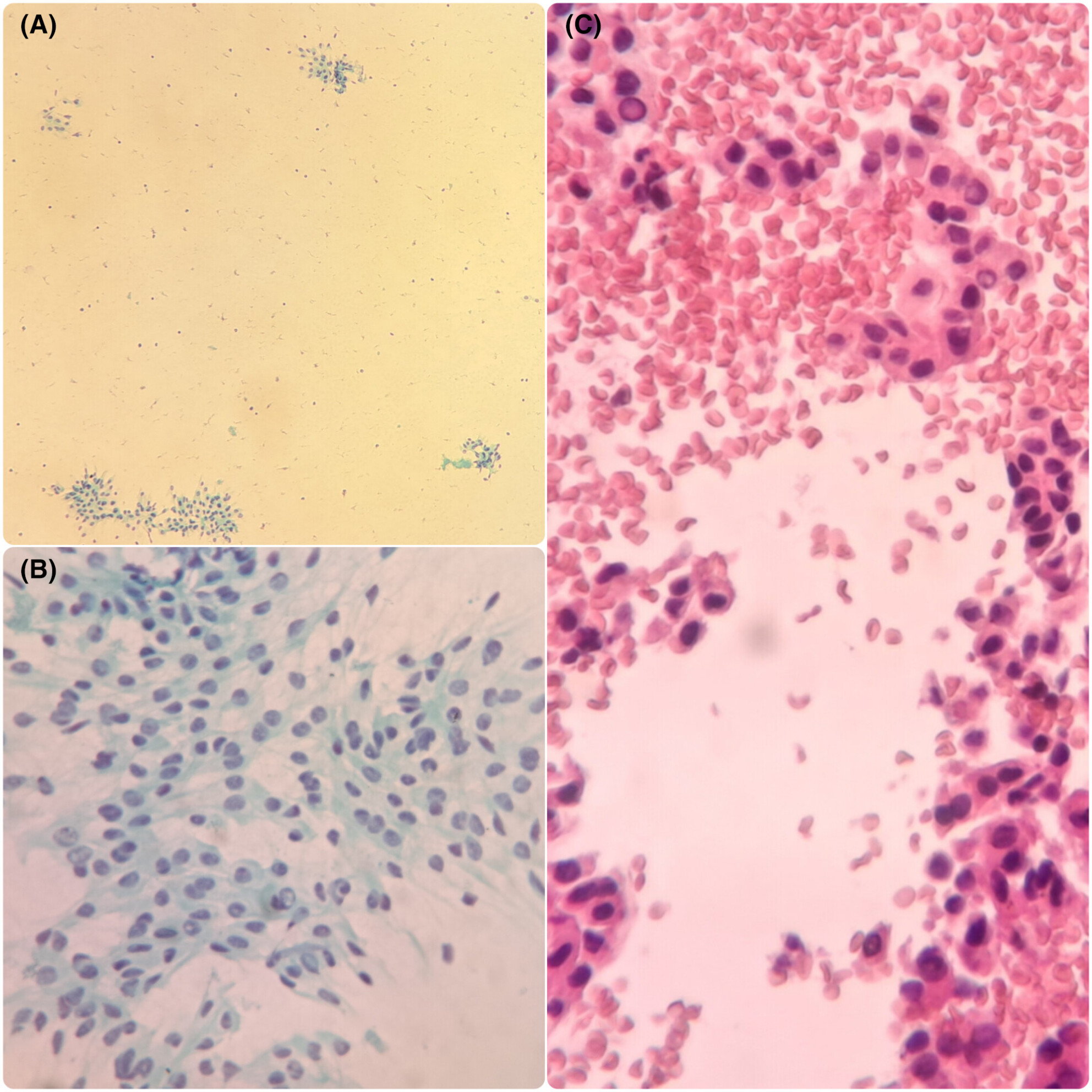
This study provides the first cytological description of striated duct adenoma, a rare tumour recently included in the classification of the World Health Organization. Likewise, the present work emphasizes the importance of cytopathology in the diagnosis of salivary gland tumours emphasizing the usefulness of complementary techniques, including molecular studies. First cytological description of striated duct adenoma, a benign parotid tumour recently incorporated into the World Health Organization classification, which remains largely unknown.
CASE REPORT
Amelanotic melanoma arising from a giant congenital melanocytic nevus – A novel entity diagnosed by fine needle aspiration
- Pages: 63-67
- First Published: 05 September 2024
Giant congenital melanocytic nevi (GCMN) are rare benign congenital melanocytic proliferations. Malignant transformation of these lesions is even rarer. This case report might be the first to describe the cytomorphological features of amelanotic melanoma of the lumbosacral region arising from GCMN in infancy, diagnosed by fine needle aspiration, highlighting the diagnostic challenges and technical difficulties encountered.
Incidental finding in urine cytology in a patient with chronic renal disease
- Pages: 68-70
- First Published: 16 September 2024
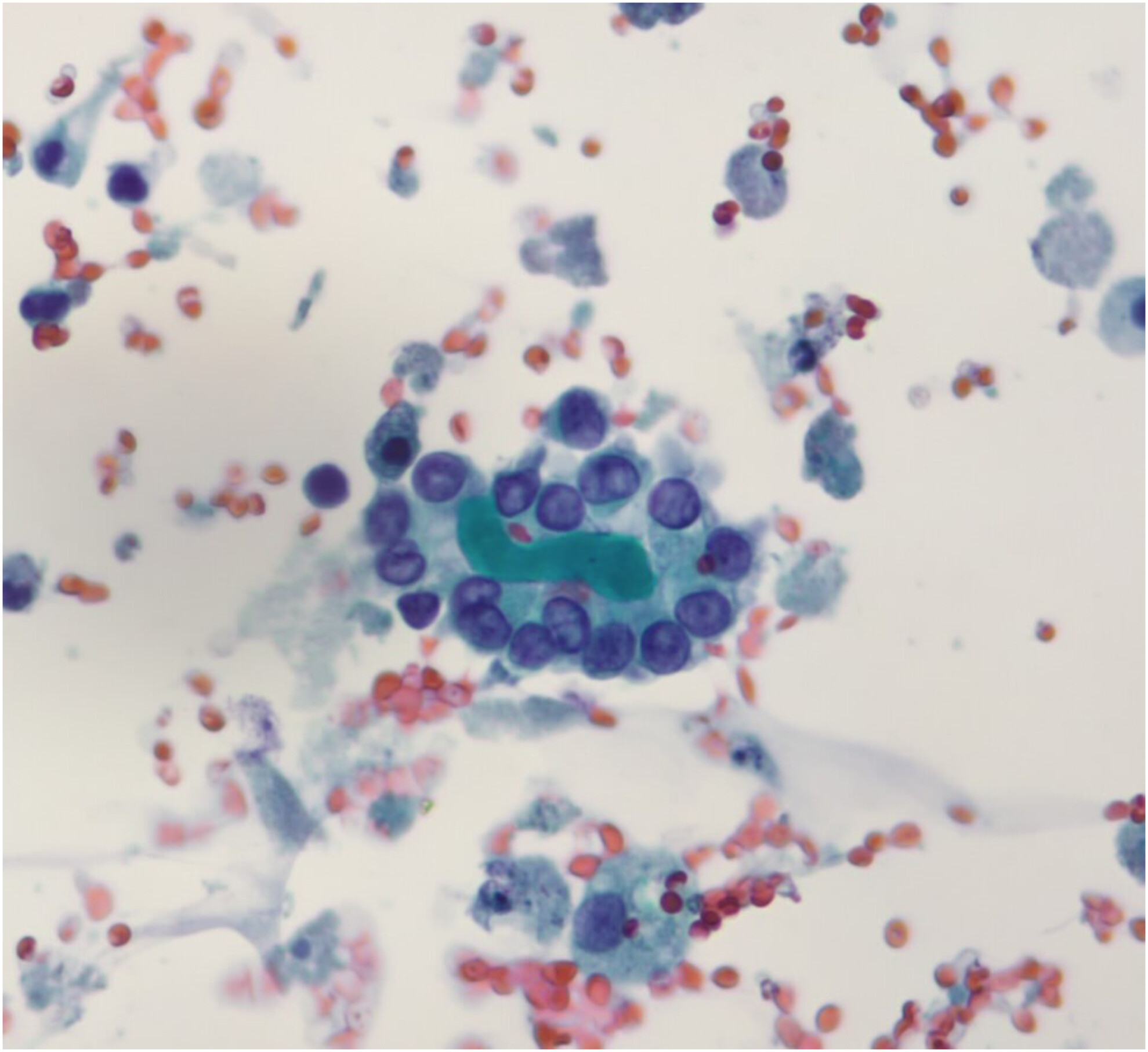
An incidental finding in urine smears from a patient with a presumptive diagnosis of an IgA mesangial nephropathy is presented. A possible example of the potential value of urine cytology in functional renal disorders.
We report a case of an incidental finding in urine cytology from a patient with a presumptive diagnosis of an IgA mesangial glomerulonephritis, previously diagnosed as atypical urothelial cells.
Metastatic Medullary Thyroid Carcinoma Presenting as an Incidental Posterior Mediastinal Mass
- Pages: 71-74
- First Published: 27 September 2024
A posterior mediastinal mass of unknown origin was eventually identified as metastatic medullary thyroid carcinoma after thyroid FNA with calcitonin staining led to a review of the original histopathology and application of additional immunohistochemistry. This case highlights the importance of calcitonin testing for masses with neuroendocrine features, potentially enabling earlier detection of MTC.
Adenosquamous carcinoma arising within a long-standing intrapulmonary bronchogenic cyst in an adult presenting with hyponatraemia
- Pages: 75-78
- First Published: 23 September 2024
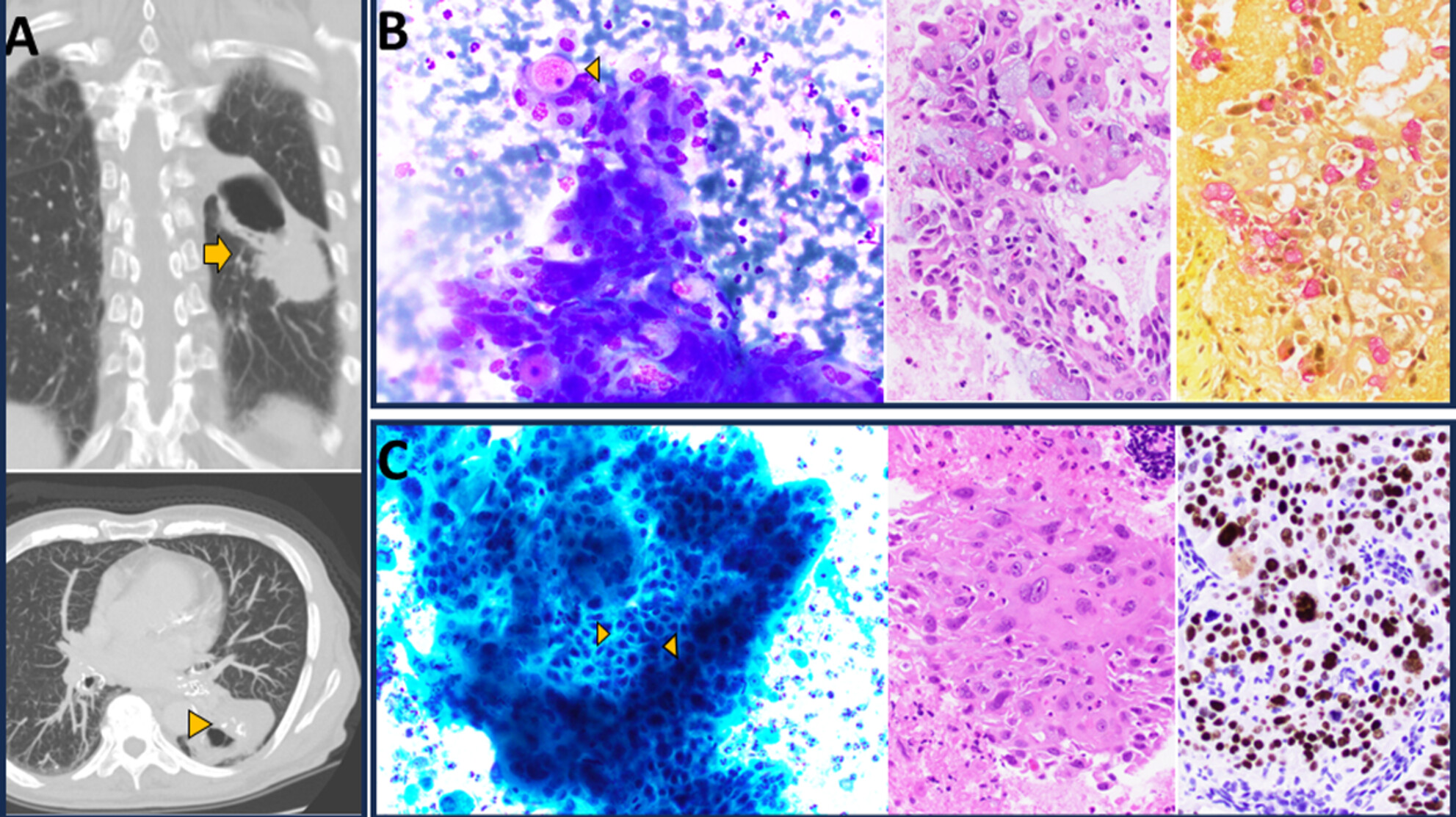
A 74-year-old woman's persistent hyponatraemia led to the discovery of an adenosquamous carcinoma within an intrapulmonary bronchogenic cyst (IPBC), diagnosed 59 years prior. This is the first reported case of such a transformation in an IPBC.
An adenosquamous carcinoma, originating from an intrapulmonary bronchogenic cyst identified 59 years prior, was discovered during the workup for a patient's unexplained, persistent hyponatraemia.
Infantile Fibromatosis Colli: Cytological Diagnosis of a Rare Entity
- Pages: 79-84
- First Published: 07 November 2024
Fibromatosis colli of infancy, a benign spindle cell lesion originating from sternocleidomastoid muscle, can be diagnosed under appropriate clinical settings, aided by radiological and cytological findings. If diagnosed early, unnecessary surgical interventions could be avoided.
Cytopathological findings of granular cell glioblastoma in intraoperative squash smear preparations: A case report
- Pages: 85-89
- First Published: 12 September 2024
Granular cell glioblastoma is a rare subtype of IDH-wildtype glioblastoma, which may mimic benign macrophage-rich brain lesions during intraoperative consultation. Few studies have previously discussed its cytopathological features with special attention to the differential diagnosis during intraoperative consultation. After a comparative analysis of previously reported cases, we found that some cytopathological findings can be useful to differentiate granular tumour cells from macrophages and other central nervous system tumours, although their presentation is not constant and clinical and radiological correlation is always critical.
ENIGMA PORTAL
The Great Impostor: A challenging case of small-cell melanoma with isolated adrenal metastasis
- Pages: 90-95
- First Published: 07 August 2024
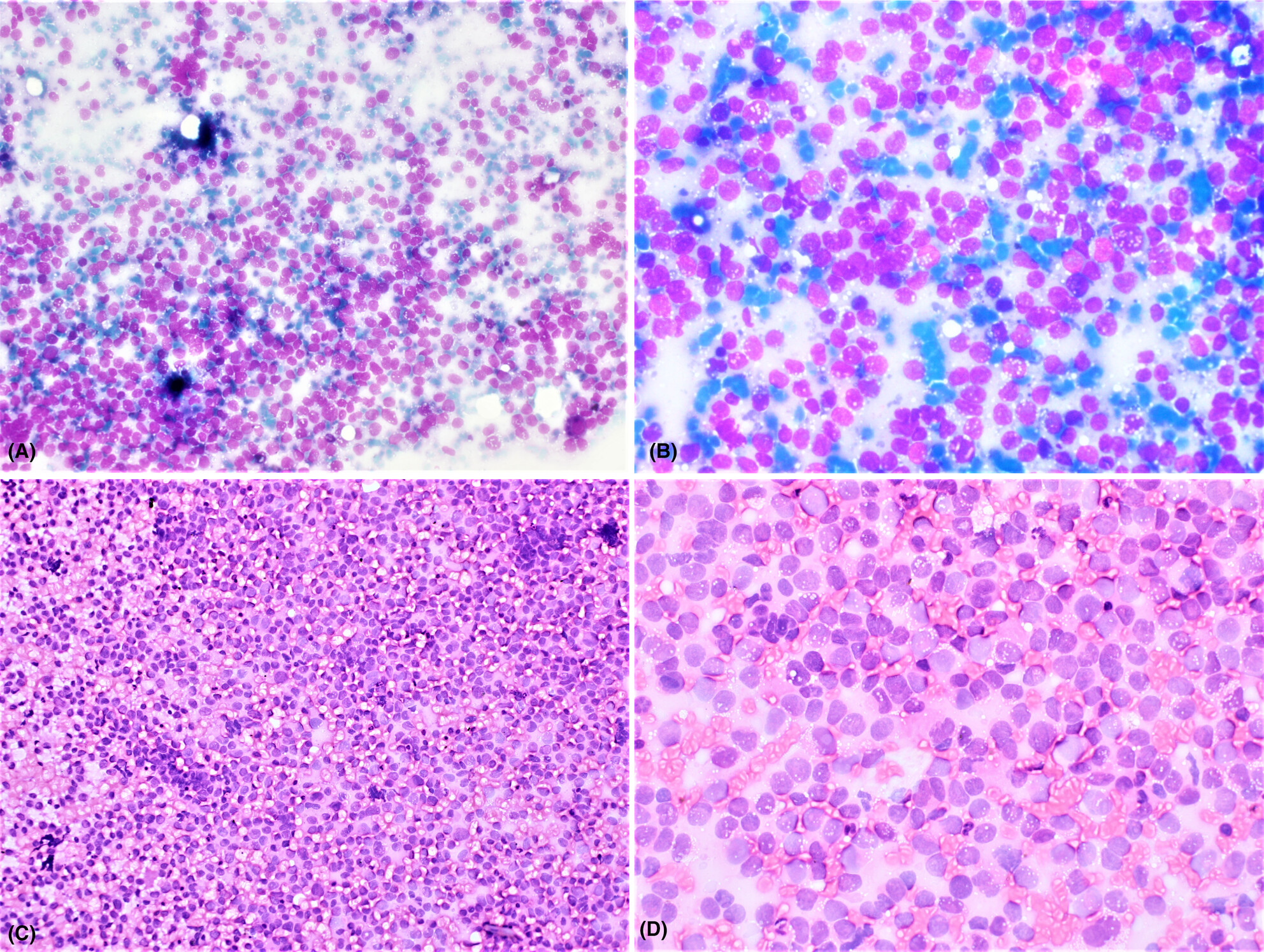
Small-cell melanoma masquerading as an adrenal non-Hodgkin lymphoma.
The index report illustrates the deceptive cytomorphologic features of a small cell type malignant melanoma metastatic to the adrenal gland. The diagnosis was confirmed by performing immunocytochemistry on the cell block sections. The key cytomorphologic mimics and their distinctive features have also been highlighted.
IMAGES IN CYTOLOGY
Navigating the Diagnostic Challenges in Lymph Node Cytology: The Case of Reactive Hyperplasia
- Pages: 99-102
- First Published: 05 November 2024
Neonatal Mimicker Cells in Cerebrospinal Fluid
- Pages: 103-104
- First Published: 18 October 2024
Germinal matrix cells are immature-appearing cells that can be present in the cerebrospinal fluid of premature neonates with intraventricular hemorrhage. These cells can mimic neoplastic cells and are an important morphologic pitfall.





